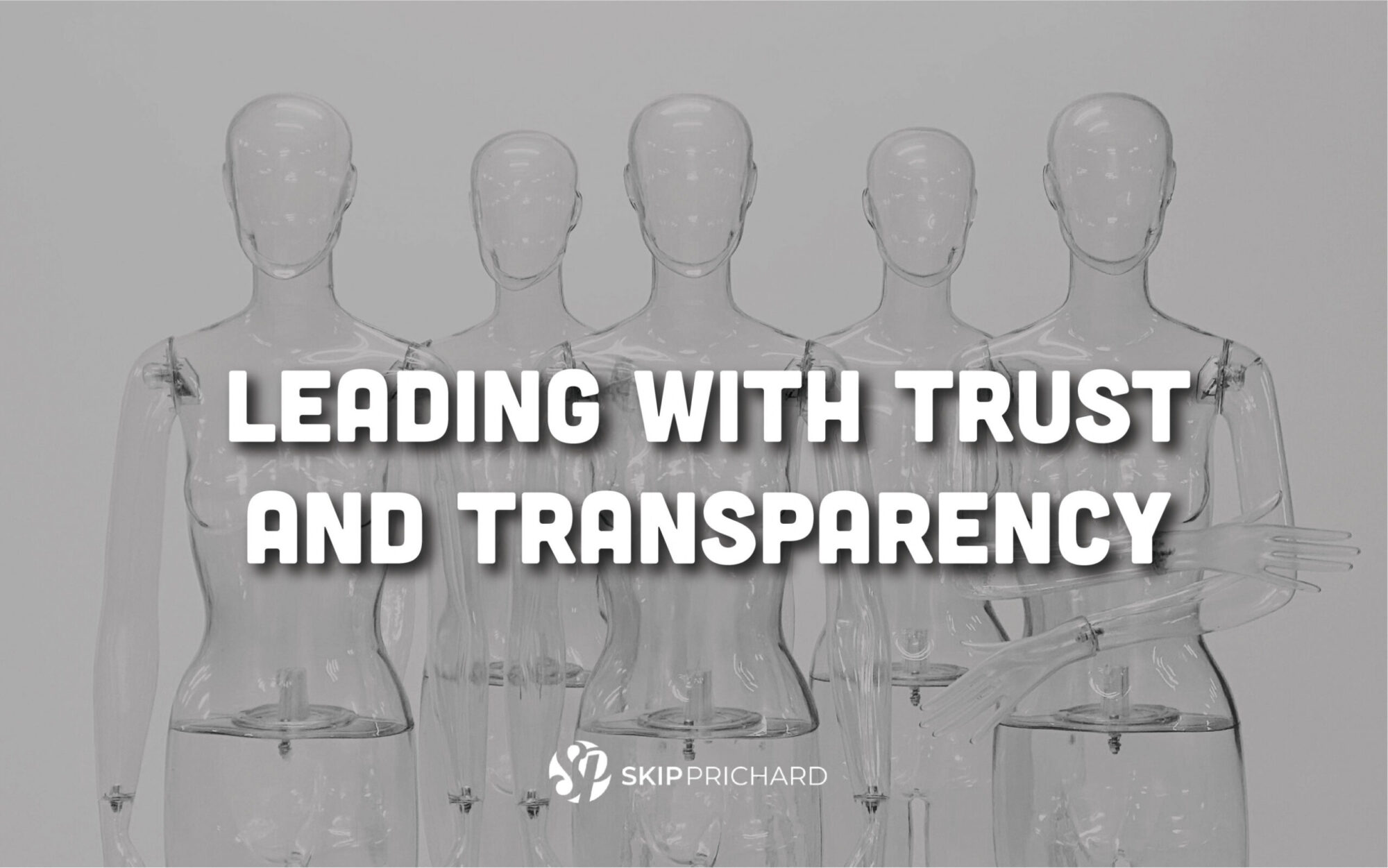trust and transparency
It’s easy to say that leadership is built on trust. It’s much harder to live it.
Trust doesn’t appear in the quarterly metrics or show up on a spreadsheet, but it’s the single greatest accelerator of performance. Without it, teams slow down. Every decision takes longer. Every idea faces resistance.
A few years ago, I worked with someone who believed information was power. He hoarded it. Meetings became guessing games. Eventually, his best people left…not because of pay, but because they didn’t know what was real. When trust disappears, even the most talented teams crumble.
The Edelman Trust Barometer reports that less than half of employees trust their senior leaders to “do what is right.” That statistic should alarm every leader. It’s a signal that many organizations are operating with a silent drag on performance.
Trust and transparency are built in the quiet moments. A leader who admits an error. A manager who shares context instead of commands. A CEO who explains the “why” behind a decision, even when it’s uncomfortable.
ask what am i missing?
In Project Aristotle, Google’s internal study of what makes teams thrive, the top factor wasn’t IQ, diversity, or skill—it was psychological safety. Amy Edmondson calls it “a shared belief that the team is safe for interpersonal risk-taking.” When people know they can question, challenge, or offer ideas without being punished, innovation follows.
I’ve seen this play out firsthand. A team I once advised had a leader who started every meeting by asking, “What am I missing?” It sounds simple, but it changed everything. People stopped editing themselves. The best ideas often came from the quietest voices. That’s what transparency creates—space for contribution.
Transparency also has boundaries. It’s not sharing every thought that crosses your mind. It’s about clarity. When done right, it builds confidence. When overdone, it breeds confusion.
Research from Harvard Business Review shows that employees who trust their leaders are five times more likely to stay and six times more likely to be engaged.
One of my favorite examples of rebuilding trust comes from Howard Schultz at Starbucks. When he returned as CEO, he didn’t begin with strategy or products. He began with open forums, listening sessions, and candid conversations about where the company had lost its way. Trust was the first thing he worked to restore, because everything else depends on it.
In sports, Gregg Popovich of the San Antonio Spurs is known for holding players accountable while caring deeply for them. His trust-building method? Honest conversations. Sometimes blunt. Always respectful. He talks to players about life as much as basketball. They know he’s for them, not just their performance.
trust during crisis
In times of crisis, transparency isn’t just the right thing to do—it’s the strategic thing to do. The companies that emerge stronger from turbulent periods share a common characteristic: they communicate with radical honesty, even when uncertainty clouds their vision.
During the Tylenol crisis in the 1980s, Johnson & Johnson faced every CEO’s nightmare: their flagship product was linked to deaths, and initial information was fragmented and frightening. The company’s leaders could have retreated behind lawyers and PR firms, parsing every word and deflecting responsibility. Instead, they did something remarkable: they led with their values rather than their legal team’s recommendations.
CEO James Burke and his team spoke directly to the public, acknowledged what they knew and—crucially—what they didn’t know yet. They pulled products from shelves nationwide before being asked to do so, costing the company over $100 million. They redesigned packaging to prevent future tampering. Most importantly, they never wavered from the principle that protecting people mattered more than protecting profits.
The result? Within a year, Tylenol had regained its market leadership position. Decades later, business schools still teach this case as the gold standard for crisis leadership. The lesson isn’t just about good PR…it’s about how transparency, even in the darkest moments, can actually accelerate recovery and strengthen stakeholder relationships.
Think about the energy drain that occurs when people don’t trust what they’re being told. Employees spend countless hours reading between the lines, speculating about hidden agendas, and preparing for scenarios.
But when leaders consistently share both good news and bad news with equal directness, something shifts. Teams stop bracing for impact and start leaning into solutions. They stop managing up and start managing forward.
If you want to dig deeper into this subject, listen to my Aim Higher episode on Leading with Trust and Transparency.


